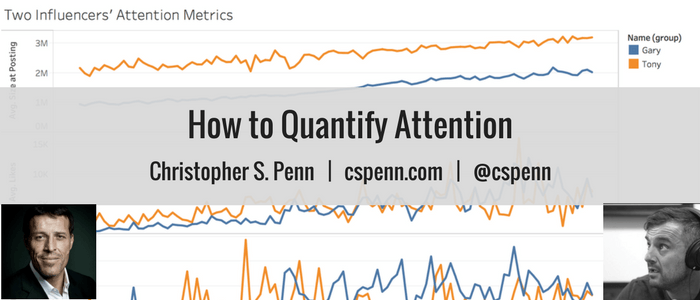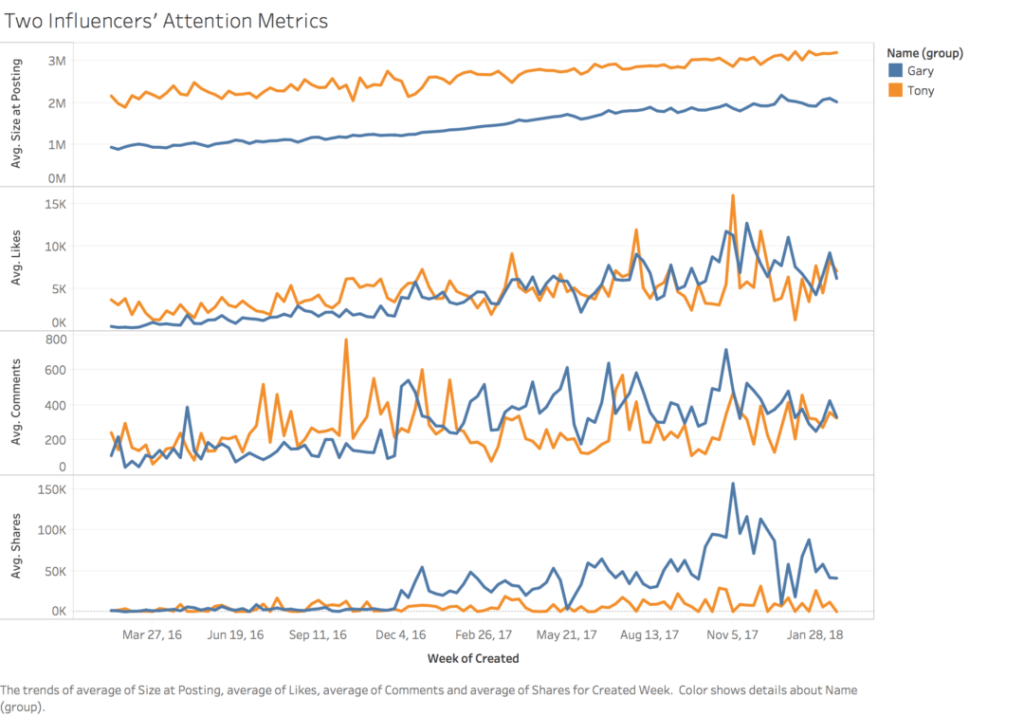
How do we quantify attention?
In the past 24 hours, I’ve received broadcasts and mass mails from no fewer than half a dozen marketers, speakers, and motivators talking about attention. We have to “day trade attention”, “earn their attention”, and variations on that theme. I don’t question that premise at all – attention is the most scarce resource today for marketers. The smartphone in our audience’s pocket is our gateway to them, but it’s the gateway for every competitor as well:
- Netflix
- Video games
- Chat with friends
- Pretty much anything besides marketing
Anything which consumes even a few seconds of our audience’s time leaves that much less time for us, because time is very much a zero-sum game. We can’t create more time in the day.
Yet, if attention is so valuable – and it is – why are we so bad at measuring it?
What Is Attention?
If we dig into the historical roots of attention, it comes from Latin – ad tendere, to stretch. When we speak of attention, we assume it’s a thing, a noun, when it’s technically a gerund. We don’t pay attention, because attention isn’t a functional currency.
We attend.
Our audience attends.
That means they show up and do something. They stretch their minds, their time, their energy to be with us.
Knowing what attention is helps us to measure it.
Metrics of Attending
When we attend something, like an event, do we just passively show up, do nothing for a few hours, then leave? I hope not. We show up, certainly, but then we engage with the event, from listening to speakers to conversations over lunch. Ideally, after the event, we’ve learned so much that we take action.
From the perspective of the event, we accomplished three things:
- We reached people.
- We engaged with people.
- We convinced people to take action.
These are the metrics of attention. Awareness. Engagement. Action.
When we consider social media metrics alone (ideally they’re never alone), we could bucket some of the different numbers as follows:
Awareness:
- Followers
- Connections
- Reach numbers
- Post views
Engagement:
- Likes
- Comments
- Replies
Action:
- Shares
- Clicks
- Ad clicks
We could extend this framework all the way down our digital marketing operations funnel, from website traffic to time on page to lead forms… any marketing metric can broadly fit into one of these three categories.
Let’s look at an example. Let’s put together the metrics of Gary Vaynerchuk and Tony Robbins. We’ll use followers as our top-level awareness number, because more people following someone inherently means higher awareness; even if 1% of the audience sees something, 1% of a bigger number is still bigger.
We’ll use likes and comments for engagement.
We’ll use shares – someone taking an action to proactively share something with their own network – as the action.
Important: these are the buckets for this example. If we had more data – like access to their Google Analytics, marketing automation, sales CRM, customer satisfaction system, etc. we would absolutely incorporate them to improve precision. In this case, this is what is publicly available.
Over the last two years, Tony and Gary have been competing for attention. They may not be direct competitors, but as above, every minute someone spends watching Tony is a minute they’re not spending watching Gary, and vice versa.
What do we see? Can we quantify the attention each has earned?

Absolutely. We see that Gary has earned more audience, more reach, especially over time. Both people are growing their following, but Gary’s is growing faster.
We see that for the engagement race, Tony had the edge until about the beginning of 2017, when Gary picked up more engagement in terms of likes and comments.
We see engagement translating into action. Gary’s audience began to share substantially more as engagement went up.
Awareness. Engagement. Action. These conceptual buckets are how to quantify attention – and the more granular we are, the more strategic we will be in driving those metrics in the direction we want them to go.
What Else?
Avoid limiting attention to just digital metrics. We have the ability to do so much more today as marketers. We have surveying, focus groups, conversations, real world events, advertising – almost every manner of activity can be quantified.
The way forward, the way to understand how to quantify attention, is to identify our key performance indicators, then perform massive regression analysis to understand what metrics drive those KPIs in each bucket.
We know attention is scarce. We know it’s valuable. By quantifying it, we reap its value, translating attention into impact and business results.
You might also enjoy:
- Mind Readings: Generative AI and Addition vs Substitution of Jobs
- You Ask, I Answer: AI Music Collaborations and Copyright?
- Almost Timely News, January 14, 2024: The Future of Generative AI is Open
- Mind Readings: Hacking Social Media Algorithms
- You Ask, I Answer: Retrieval Augmented Generation for Tax Law?
Want to read more like this from Christopher Penn? Get updates here:
 Take my Generative AI for Marketers course! |


Leave a Reply